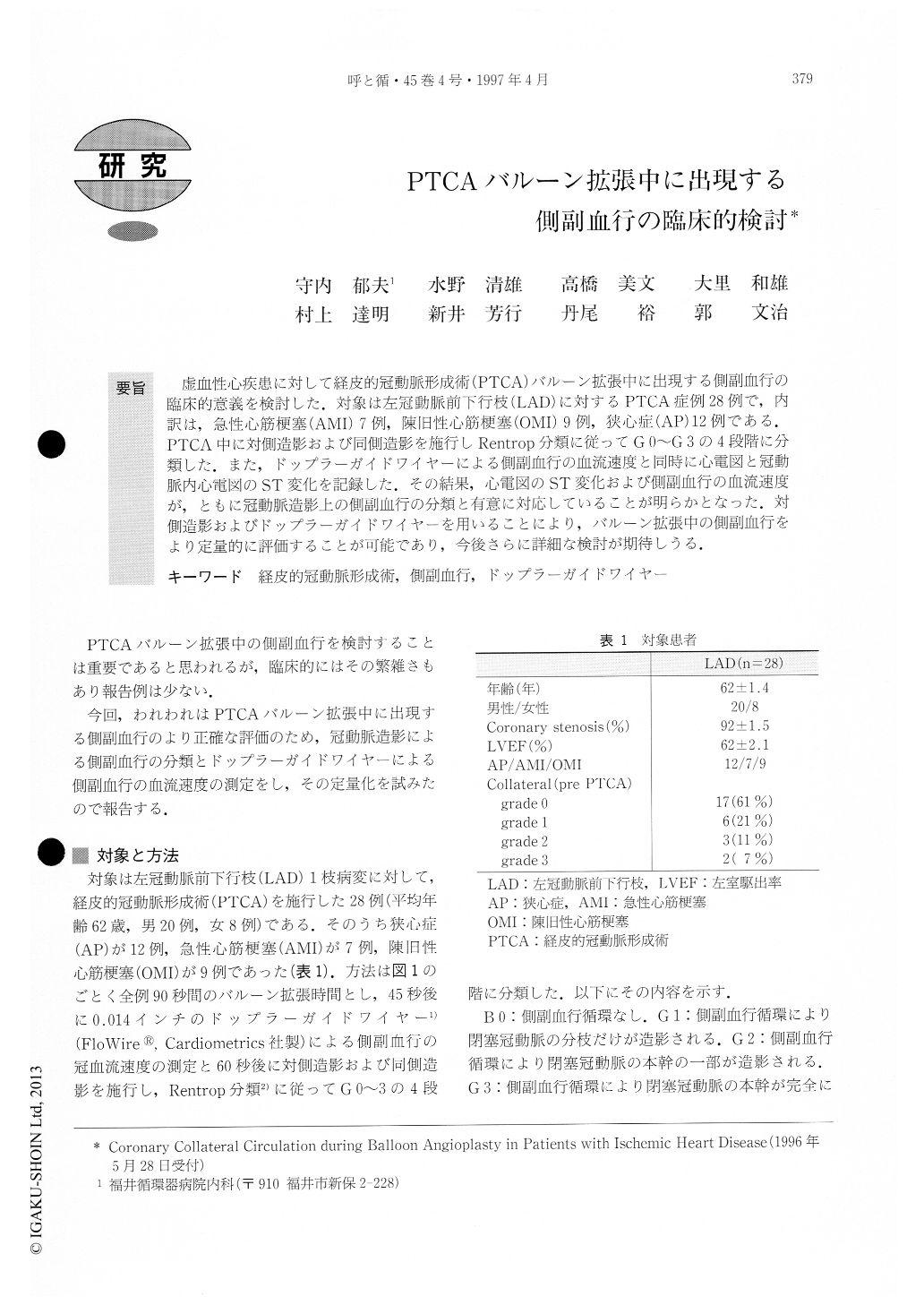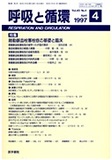Japanese
English
- 有料閲覧
- Abstract 文献概要
- 1ページ目 Look Inside
虚血性心疾患に対して経皮的冠動脈形成術(PTCA)バルーン拡張中に出現する側副血行の臨床的意義を検討した.対象は左冠動脈前下行枝(LAD)に対するPTCA症例28例で,内訳は,急性心筋梗塞(AMI)7例,陳旧性心筋梗塞(OMI)9例,狭心症(AP)12例である.PTCA中に対側造影および同側造影を施行しRentrop分類に従ってG0〜G3の4段階に分類した.また,ドップラーガイドワイヤーによる側副血行の血流速度と同時に心電図と冠動脈内心電図のST変化を記録した.その結果,心電図のST変化および側副血行の血流速度が,ともに冠動脈造影上の側副血行の分類と有意に対応していることが明らかとなった.対側造影およびドップラーガイドワイヤーを用いることにより,バルーン拡張中の側副血行をより定量的に評価することが可能であり,今後さらに詳細な検討が期待しうる.
We investigated the clinical significance of coronary collateral circulation during balloon inflation for per-cutaneous transluminal coronary angioplasty (PTCA) in patients with ischemic heart disease. The subjects con-sisted of 28 patients (20 males and 8 females with a mean age of 62 years) who underwent PTCA in the left ante-rior descending artery (LAD). There were 7 patients with acute myocardial infarction (AMI), 9 with old myocardial infarction (OMI), and 12 with angina pector-is (AP). The duration of balloon inflation was 90 seconds in all subjects. The coronary collateral flow velocity was measured by using a Doppler guide wire inflated for 45 seconds. Contralateral and ipsilateral coronary angio-graphy was performed at 60 seconds of inflation. Coro-nary collateral circulation was evaluated with Rentrop's classification grading from G0 to G3. Changes in ST-segment on ECG and intracoronary ECG (ic ECG) were also recorded. Coronary collateral circulation was evaluated as G0 in 3 patients (11%), G1 in 4(14%), G2 in 14(50%) and G3 in 7(25%). Results were listed depend-ing on these grades. Data (mean±SE) were obtained at the first inflation in all patients and statistically anal-yzed with variance analysis. Changes in ST-segment on ECG were 8.7±3.5 mm (G0), 8.3±2.5 mm (G1), 4.0±0.6 mm (G2) and 1.6±0.9 mm (G3) respectively (p<0.005). The coronary collateral flow velocities were 1.5±0.2 cm/sec (G0), 1.7±0.3 cm/sec (G1), 3.8±0.5 cm/sec (G2) and 10±1.7 cm/sec (G3) respectively (p<0.0001). There have been few reports on collateral circulation during PTCA-balloon inflation, although such studies are clinically important. In the present study, a significant correlation was found between the angiographic classification of collateral circulation and heart muscle ischemia confirmed by changes in ST-segment on ECG and the collateral flow velocity. Coronary collateral circulation during balloon inflation has protective effects for the heart muscle during acute coronary occlu-sion.

Copyright © 1997, Igaku-Shoin Ltd. All rights reserved.


